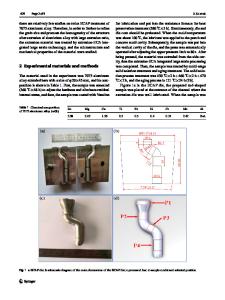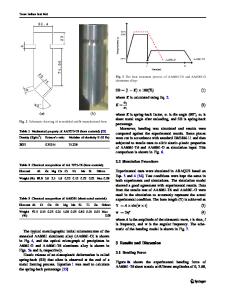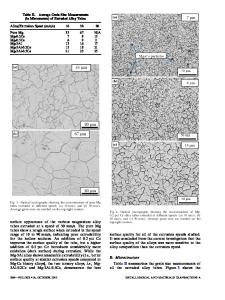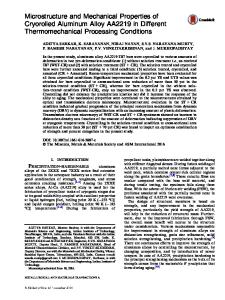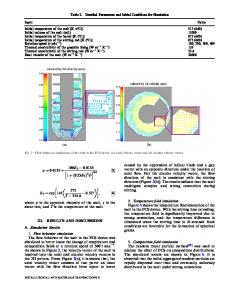Research on Microstructure and Properties of Aged 7050T451 Aluminum Alloy
- PDF / 1,238,318 Bytes
- 8 Pages / 593.972 x 792 pts Page_size
- 28 Downloads / 312 Views
TRODUCTION
CREEP age forming is primarily used to produce aerodynamic profiles on metallic airframe structures such as wing skins. It offers many solutions to the problems encountered when conventional cold-forming processes are applied to the integrally stiffened structures.[1–3] This technique is a combination of the age-hardening process and stress-induced deformation/forming of metal parts. In creep age forming of aluminum alloys for airframe applications, curved wing skin components are manufactured by mechanically conforming a plate or sheet over a specially designed curved tool, with the metal and tool combination then being held (under load) at the alloy’s aging temperature to simultaneously achieve precipitation in the alloy and creep relaxation of the material into the required curvature. And, the age-hardening process has a significant effect for mechanical properties of the metal parts formed.[4–7] However, the control of precipitation behavior related to age forming may be complicated because there will be some ‘‘age’’ hardening that actually occurs in those hardenable aluminum alloys and particular microstructural changes will be induced such as precipitation of plate-like coherent or semi-coherent phases in Al alloys.[8–10] This process hence probably differentiates deformation from conventional forming behavior such as peen forming, bump pressing, and roll forming. And,
PENGTAO GAI, XIA HUANG and MINGTAO WANG, Senior Engineers, and YUANSONG ZENG, Professor, are with the Beijing Aeronautical Manufacturing Technology Research Institute, Beijing, People s Republic of China. Contact e-mail: [email protected] Manuscript submitted February 23, 2013. METALLURGICAL AND MATERIALS TRANSACTIONS B
these changes may affect the mechanical properties and anisotropy of the Al alloys. More generally, the yield strength, ductility, and resistance to both fatigue and stress corrosion cracking of those Al alloys are mostly determined by the strengthening precipitates.[11,12] Around the world, some groups have studied creep age forming. In the United Kingdom, the University of Manchester participated in the Ageform project; the University of Birmingham and the Imperial College developed a closed form to predict the springback and residual stress for creep age forming.[13–16] In France, some groups carried out some studies using creep models to predict the curvature of an integrally stiffened structure.[17,18] In China, researchers of the Beijing aeronautical manufacturing technology research institute and Beijing University of Aeronautics and Astronautics carried out some finite element analysis using creep models as well.[19] A limited number of works for this relatively new processing technique have been published which focus on the relationship between the precipitates and the properties of the ultrahigh-strength aerospace 7xxx Al-based alloys selected. Alloy 7075 has good fatigue strength and average machinability, and many heat treatments and heat treating practices are available to develop optimum strength, toughness, an
Data Loading...

